- Home
- James Patterson
The Lake House
The Lake House Read online
Copyright © 2003 by James Patterson
All rights reserved. No part of this book may be reproduced in any form or by any electronic or mechanical means, including information storage and retrieval systems, without permission in writing from the publisher, except by a reviewer who may quote brief passages in a review.
Little, Brown And Company
Hachette Book Group
237 Park Avenue
New York, NY 10017
Visit our website at www.HachetteBookGroup.com.
The Little, Brown And Company and logo are trademarks of Hachette Book Group, Inc.
ISBN: 978-0-7595-2784-3
First eBook Edition: June 2003
Contents
Copyright
Prologue: RESURRECTION
Part One: CHILD CUSTODY
Chapter 1
Chapter 2
Chapter 3
Chapter 4
Chapter 5
Chapter 6
Chapter 7
Chapter 8
Chapter 9
Chapter 10
Chapter 11
Chapter 12
Chapter 13
Chapter 14
Chapter 15
Chapter 16
Chapter 17
Part Two: FLYING LESSONS
Chapter 18
Chapter 19
Chapter 20
Chapter 21
Chapter 22
Chapter 23
Chapter 24
Chapter 25
Chapter 26
Chapter 27
Chapter 28
Chapter 29
Chapter 30
Chapter 31
Part Three: HOUSE CALLS
Chapter 32
Chapter 33
Chapter 34
Chapter 35
Chapter 36
Chapter 37
Chapter 38
Chapter 39
Chapter 40
Chapter 41
Chapter 42
Chapter 43
Chapter 44
Part Four: YELLOW BRICK ROAD
Chapter 45
Chapter 46
Chapter 47
Chapter 48
Chapter 49
Chapter 50
Chapter 51
Chapter 52
Chapter 53
Chapter 54
Chapter 55
Chapter 56
Chapter 57
Chapter 58
Chapter 59
Chapter 60
Chapter 61
Chapter 62
Chapter 63
Chapter 64
Chapter 65
Chapter 66
Part Five: THE HOSPITAL
Chapter 67
Chapter 68
Chapter 69
Chapter 70
Chapter 71
Chapter 72
Chapter 73
Chapter 74
Chapter 75
Chapter 76
Chapter 77
Chapter 78
Chapter 79
Chapter 80
Chapter 81
Chapter 82
Chapter 83
Chapter 84
Chapter 85
Part Six: A BRAND NEW DAY
Chapter 86
Chapter 87
Chapter 88
Chapter 89
Chapter 90
Chapter 91
Chapter 92
Chapter 93
Chapter 94
Chapter 95
Chapter 96
Chapter 97
Chapter 98
Chapter 99
Chapter 100
Chapter 101
Chapter 102
Chapter 103
Chapter 104
Chapter 105
Chapter 106
Epilogue: THE LAKE HOUSE
Chapter 107
Chapter 108
Chapter 109
Also by James Patterson:
The Thomas Berryman Number
Season of the Machete
See How They Run
The Midnight Club
Along Came a Spider
Kiss the Girls
Hide & Seek
Jack & Jill
Miracle on the 17thGreen
(with Peter de Jonge)
Cat & Mouse
When the Wind Blows
Pop Goes the Weasel
Black Friday
Cradle and All
Roses Are Red
1st to Die
Suzanne’s Diary for Nicholas
Violets Are Blue
2nd Chance
(with Andrew Gross)
The Beach House
(with Peter de Jonge)
Four Blind Mice
The Jester
(with Andrew Gross)
This is for the other Max, Maxine Paetro,
who has been involved with the bird children
from the beginning.
She knows and loves them as I do.
And they love her back!
IT SURPRISES SOME READERS that When the Wind Blows (featuring Max and the gang) is my most successful novel around the world. Who knows why for sure, but I suspect it’s because an awful lot of people, myself included, have a recurring fantasy in which they fly. They treasure it. On the other hand, there are plenty of folks who won’t fantasize or play make-believe. They wouldn’t have gotten to the Neverland with Peter Pan. There is one other thing that might be interesting to those who read this book. When I researched it I interviewed dozens of scientists. All of them said that things like what happens in The Lake House will happen in our lifetime. In fact, a scientist in New England claims that he can put wings on humans right now. I’ll bet he can.
So settle in, you believers, and even you Muggles.
Let yourself fly.
Prologue
RESURRECTION
The Hospital, somewhere in Maryland
At about eleven in the evening, Dr. Ethan Kane trudged down the gray-and-blue-painted corridor toward a private elevator. His mind was filled with images of death and suffering, but also progress, great progress that would change the world.
A young and quite homely scrub nurse rounded the corner of the passageway and nodded her head deferentially as she approached him. She had a crush on Dr. Kane, and she wasn’t the only one.
“Doctor,” she said, “you’re still working.”
“Esther, you go home, now. Please,” Ethan Kane said, pretending to be solicitous and caring, which couldn’t have been further from the truth. He considered the nurse inferior in every way, including the fact that she was female.
He was also exhausted from a surgical marathon: five major operations in a day. The elevator car finally arrived, the doors slid open, and he stepped inside.
“Good night, Esther,” he said, and showed the nurse a lot of very white teeth, but no genuine warmth, because there was none to show.
He straightened his tall body and wearily passed his hand over his longish blond hair, cleaned his wire-rimmed glasses on the tail of his lab coat, then rubbed his eyes before putting his glasses back on as he descended to the subbasement level.
One more thing to check on . . . always one more thing to do.
He walked half a dozen quick steps to a thick steel door and pushed it open with the palm of his hand.
He entered the dark and chilly atmosphere of a basement storage room. A pungent odor struck him.
There, lying on a double row of gurneys, were six naked bodies. Four men, two women, all in their late teens and early twenties. Each was brain-dead, each as good as gone, but each had served a worthy cause, a higher purpose. The plastic bracelets on their wrists said DONOR.
“You’re making the world a better place,” Kane whispered as he passed the bodies. “Take comfort in that.”
Dr. Kane strode to the far end of the room and pushed open another steel door, an exact duplicate of the first. This time rather than a chilly blast, he was met by a searing wave of hot air, the deafening roar of fire, and the unmistakable smell of death.
All three incinerators were going tonight. Two of his nighttime porters, their powerful workingman bodies glistening with grime and sweat, looked up as Dr. Kane entered the cinder-block chamber. The men nodded respectfully, but their eyes showed fear.
“Let’s pick up the pace, gentlemen. This is taking too long,” Kane called out. “Let’s go, let’s go! You’re being paid well for this scut work. Too well.”
He glanced at a naked young woman’s corpse laid out on the cement floor. She was white-blond, pretty in a music-video sort of way. The porters had probably been diddling with her. That’s why they were behind schedule, wasn’t it?
Gurneys were shoved haphazardly into one corner, like discarded shopping carts in a supermarket parking lot. Quite a spectacle. Hellish, to be sure.
As he watched, one of the sweat-glazed minions worked a wooden paddle under a young male’s body while the other swung open the heavy glass door of an oven. Together they pushed, shoved, slid the body into the fire as if it were a pizza.
The flames dampened for a moment, then as the porters locked down the door, the inferno flared again. The cremation chamber was called a “retort.” Each retort burned at 3,600 degrees, and it took just over fifteen minutes to reduce a human body to nothing but ashes.
To Dr. Ethan Kane, that meant one thing: no evidence of what was happening at the Hospital. Absolutely no evidence of Resurrection.
“Pick up the pace!” he yelled again. “Burn these bodies!”
The donors.
Part One
CHILD CUSTODY
1
IT WAS BEING CALLED “the mother of all custody trials,” which might have explained why an extra fifty thousand people had poured into Denver on that warm day in early spring.
The case was also being billed as potentially more wrenching and explosive than Baby M, or Elian Gonzales, or O. J. Simpson’s battle against truth and decency. I happened to think that this time maybe the media hype was fitting and appropriate, even a tiny bit underplayed.
The fate of six extraordinary children was at stake.
Six children who had been created in a laboratory and made history, both scientific and philosophical.
Six adorable, good-hearted kids whom I loved as if they were my own.
Max, Matthew, Icarus, Ozymandias, Peter, and Wendy.
The actual trial was scheduled to begin in an hour in the City and County Building, a gleaming white neoclassical courthouse. Designed to appear unmistakably judicial-looking, it was crowned with a pointy pediment just like the one atop the U.S. Supreme Court Building. I could see it now.
Kit and I slumped down on the front seat of my dusty, trusty beat-up blue Suburban. It was parked down the block from the courthouse, where we could see and not be seen, at least so far.
I had chewed my nails down to the quick, and there was a pesky muscle twitching in Kit’s cheek.
“I know, Frannie,” he’d said just a moment before. “I’m twitching again.”
We were suing for custody of the children, and we knew that the full weight of the law was against us. We weren’t married, we weren’t related to the kids, and their biological parents were basically good people. Not too terrific for us.
What we did have going for us was our unshakable love for these children, with whom we’d gone through several degrees of hell, and their love for us.
Now all we had to do was prove that living with us was in the best interest of the children, and that meant I was going to have to tell a story that sounded crazy, even to my closest friends, sometimes even to myself.
But every word is true, so help me God.
2
THE AMAZING STORY actually started six months ago in the tiny burg of Bear Bluff, Colorado, which is fifty or so miles northwest of Boulder on the Peak-to-Peak Highway.
I was driving home late one night when I happened to see a streaking white flash—then realized it was a young girl running fast through the woods not too far from my home.
But that was just part of what I saw. I’m a veterinarian, Dr. Frannie, and my brain didn’t want to accept what my eyes told me, so I stopped my car and got out.
The strange girl looked to be eleven or twelve, with long blond hair and a loose-fitting white smock that was stained with blood and ripped. I remember gasping for breath and literally steadying myself against a tree. I had the clear and distinct thought that I couldn’t be seeing what I was seeing.
But my eyes didn’t lie. Along with a pair of foreshortened arms, the girl had wings!
That’s correct—wings! About a nine-foot span. Below the wings, and attached somehow, were her arms. She was double-limbed. And the fit of her wings was absolutely perfect. Extraordinary from a scientific and aesthetic point of view. A mind-altering dose of reality.
She had also been hurt, which was how I eventually came to capture her, in a “mist net,” and sedate her, with the help of an FBI agent named Thomas Brennan, whom I knew better as Kit. We brought her to the animal hospital I operated, the Inn-Patient, where I examined her. I found very large pectoral muscles anchored to an oversize breastbone, anterior and posterior air sacs, a heart as large as a horse’s.
She had been “engineered” that way. A perfect design, actually. Totally brilliant.
But why? And by whom?
Her name was Max, short for Maximum, and it was incredibly hard to win her trust at first. But in her own good time she told me things that made me sick to my stomach and angrier than I’d ever been. She told me about a place called the School, where she’d been kept captive since the day she was born.
Everything you’re about to hear is already happening, by the way. It’s going on in outlaw labs across the United States and in other countries as well. In our lifetime! If it’s hard to take, all I can say is, buckle up the seat belts on your easy chair. This is what happened to Max and a few others like her.
Biologists, trying to break the barrier on human longevity, had melded bird DNA with human zygotes. It can be done. They had created Max and several other children. A flock. Unfortunately, the scientists couldn’t grow the babies in test tubes, so the genetically modified embryos had to be implanted in their mothers’ wombs.
When the mothers were close to term, labor was induced. The poor mothers were then told that their premature children had died. The preemies were shipped to an underground lab called the School. The School was, by any definition, a maximum-security prison. The children were kept in cages, and the rejects were “put to sleep,” a horrible euphemism for cold-blooded murder.
Like I said, buckle up those seat belts!
Anyway, that was why Max had done what she’d been forbidden to do. She had escaped from the School. Amazingly, we succeeded. We even got to live with the kids for a few months at a magical place we all called the Lake House.
Kit and I listened to what Max had to tell us, then we went with her to try to rescue the children still trapped at the School.
When the smoke cleared (literally), the six surviving children, including Max and her brother, were sent to live with their biological parents—people they’d never known a day in their lives.
That should have been fine, I guess, but this real-life fairy tale didn’t have a happy ending.
The kids, who ranged from twelve years old down to about four, phoned Kit and me constantly, every single day. They told us they were horribly depressed, bored, scared, miserable, suicidal—and I knew why. As a vet, I understood what no one else seemed to.
The children had done a bird thing: they had imprinted on Kit and me.
We were the only parents they knew and could love.
<
br /> 3
OUTSIDE MY BATTLE-SCARRED Suburban, the crowd was flowing like lava down Bannock Street. I read somewhere that Denver has the fittest population of any major city in America. I’d always loved it here—until now. I was about to force a joke when Kit said, “Brace yourself, Frannie. The kids are here.”
He pointed to a black Town Car slowly parting the crowd and finally coming to a stop in a no-parking zone right outside the courthouse. The hair on my neck stood even before the crowd started chanting her name. My heart was in my throat.
“Max! Max! Max! We want Max!” somebody screamed.
“The freak show has arrived!” Another country heard from.
Car doors flew open and somber-looking gray-suited bodyguards and lawyers scrambled out onto the sidewalk. Then a second car braked behind the first.
A bullnecked man in a tight-fitting black jacket opened the passenger-side door for a petite, blond woman about my age. She opened the rear door of the sedan, then reached into the backseat.
Max emerged from the Town Car. There was a sudden hush over the crowd. Even I caught my breath. She was stunning in every way. An amazing girl with extraordinary intelligence and strength—and wings that spanned close to ten feet now. They were feathered in pure white, with glints of blue and silver shining through.
“God, she’s beautiful,” I whispered. “I miss her, Kit. I miss all of the babies. This just breaks my heart.”
I remembered how stunned I had been when I saw her for the first time, and the crowd was having the same reaction now.
“Max! Max! Max!” people started to chant.
Cameras flashed. “Here, Max, look over here!” “Max, here!” “Max, smile!” “Max, fly for us!”
Four people burst through the police line, holding a banner aloft that read ONLY GOD CAN MAKE A TREE. THAT GOES FOR CHILDREN TOO.
Other signs read CELL NO! and SAY NO TO CLONING!
Another banner had birds stenciled on it and read BAKE THEM IN A PIE.
Then the news choppers came in, and it got really loud and unruly. Max swung her head around to take in the astonishing scene. My heart lurched.
We grabbed up our papers for court, and as Kit locked the car doors, he said softly, “She’s looking for us, Frannie.”
“She’s scared. I can see it in her eyes.”
Max has the ultrakeen senses of a raptor. She can hear a caterpillar wriggle from a hundred yards away. She can see the caterpillar from half a mile overhead.

 Miracle at Augusta
Miracle at Augusta The Store
The Store The Midnight Club
The Midnight Club The Witnesses
The Witnesses The 9th Judgment
The 9th Judgment Against Medical Advice
Against Medical Advice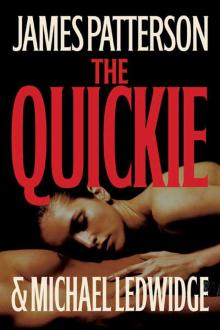 The Quickie
The Quickie Little Black Dress
Little Black Dress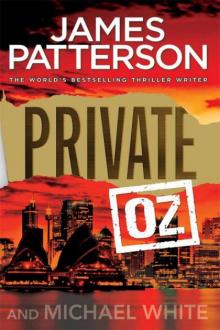 Private Oz
Private Oz Homeroom Diaries
Homeroom Diaries Gone
Gone Lifeguard
Lifeguard Kill Me if You Can
Kill Me if You Can Bullseye
Bullseye Confessions of a Murder Suspect
Confessions of a Murder Suspect Black Friday
Black Friday Manhunt
Manhunt Filthy Rich
Filthy Rich Step on a Crack
Step on a Crack Private
Private Private India
Private India Game Over
Game Over Private Sydney
Private Sydney The Murder House
The Murder House Mistress
Mistress I, Michael Bennett
I, Michael Bennett The Gift
The Gift The Postcard Killers
The Postcard Killers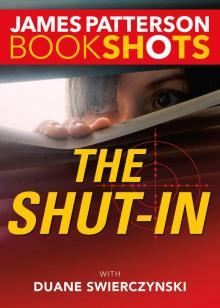 The Shut-In
The Shut-In The House Husband
The House Husband The Lost
The Lost I, Alex Cross
I, Alex Cross Going Bush
Going Bush 16th Seduction
16th Seduction The Jester
The Jester Along Came a Spider
Along Came a Spider The Lake House
The Lake House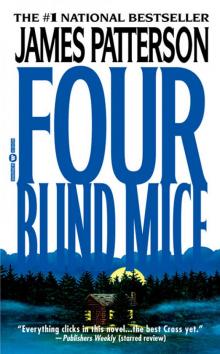 Four Blind Mice
Four Blind Mice Tick Tock
Tick Tock Private L.A.
Private L.A. Middle School, the Worst Years of My Life
Middle School, the Worst Years of My Life Cross Country
Cross Country The Final Warning
The Final Warning Word of Mouse
Word of Mouse Come and Get Us
Come and Get Us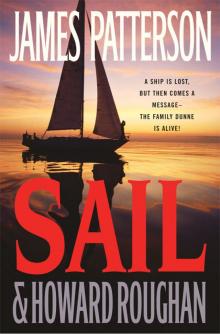 Sail
Sail I Funny TV: A Middle School Story
I Funny TV: A Middle School Story Private London
Private London Save Rafe!
Save Rafe! Swimsuit
Swimsuit Sam's Letters to Jennifer
Sam's Letters to Jennifer 3rd Degree
3rd Degree Double Cross
Double Cross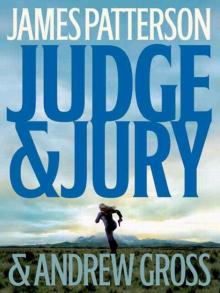 Judge & Jury
Judge & Jury Kiss the Girls
Kiss the Girls Second Honeymoon
Second Honeymoon Guilty Wives
Guilty Wives 1st to Die
1st to Die NYPD Red 4
NYPD Red 4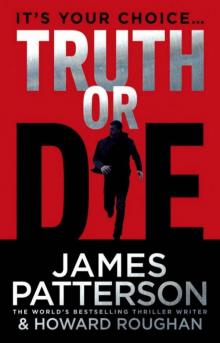 Truth or Die
Truth or Die Private Vegas
Private Vegas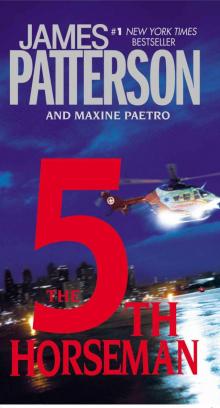 The 5th Horseman
The 5th Horseman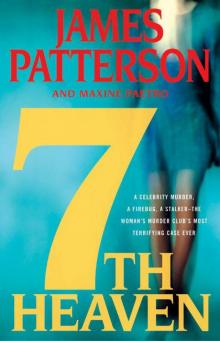 7th Heaven
7th Heaven I Even Funnier
I Even Funnier Cross My Heart
Cross My Heart Let’s Play Make-Believe
Let’s Play Make-Believe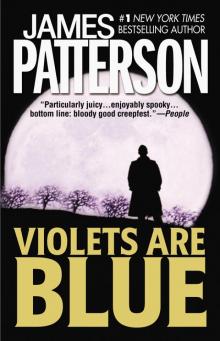 Violets Are Blue
Violets Are Blue Zoo
Zoo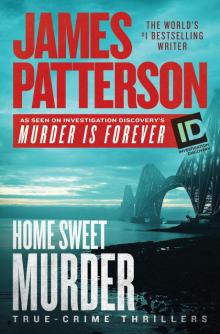 Home Sweet Murder
Home Sweet Murder The Private School Murders
The Private School Murders Alex Cross, Run
Alex Cross, Run Hunted: BookShots
Hunted: BookShots The Fire
The Fire Chase
Chase 14th Deadly Sin
14th Deadly Sin Bloody Valentine
Bloody Valentine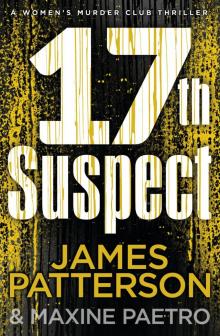 The 17th Suspect
The 17th Suspect The 8th Confession
The 8th Confession 4th of July
4th of July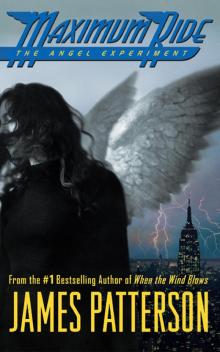 The Angel Experiment
The Angel Experiment Crazy House
Crazy House School's Out - Forever
School's Out - Forever Suzanne's Diary for Nicholas
Suzanne's Diary for Nicholas Cross Justice
Cross Justice Maximum Ride Forever
Maximum Ride Forever The Thomas Berryman Number
The Thomas Berryman Number Honeymoon
Honeymoon The Medical Examiner
The Medical Examiner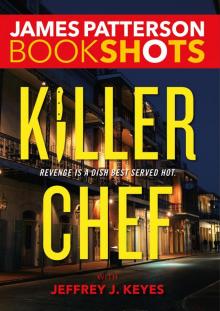 Killer Chef
Killer Chef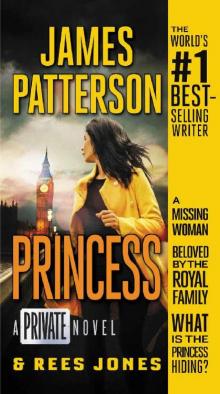 Private Princess
Private Princess Private Games
Private Games Burn
Burn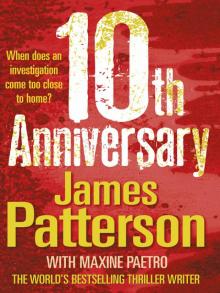 10th Anniversary
10th Anniversary I Totally Funniest: A Middle School Story
I Totally Funniest: A Middle School Story Taking the Titanic
Taking the Titanic The Lawyer Lifeguard
The Lawyer Lifeguard The 6th Target
The 6th Target Cross the Line
Cross the Line Alert
Alert Saving the World and Other Extreme Sports
Saving the World and Other Extreme Sports 1st Case
1st Case Unlucky 13
Unlucky 13 Haunted
Haunted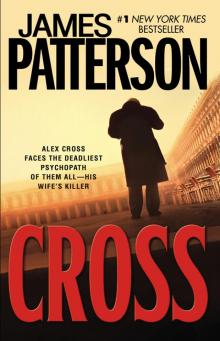 Cross
Cross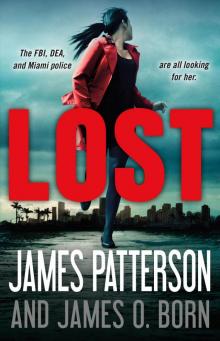 Lost
Lost 11th Hour
11th Hour Bookshots Thriller Omnibus
Bookshots Thriller Omnibus Target: Alex Cross
Target: Alex Cross Hope to Die
Hope to Die The Noise
The Noise Worst Case
Worst Case Dog's Best Friend
Dog's Best Friend Nevermore: The Final Maximum Ride Adventure
Nevermore: The Final Maximum Ride Adventure I Funny: A Middle School Story
I Funny: A Middle School Story NYPD Red
NYPD Red Till Murder Do Us Part
Till Murder Do Us Part Black & Blue
Black & Blue Fang
Fang Liar Liar
Liar Liar The Inn
The Inn Sundays at Tiffany's
Sundays at Tiffany's Middle School: Escape to Australia
Middle School: Escape to Australia Cat and Mouse
Cat and Mouse Instinct
Instinct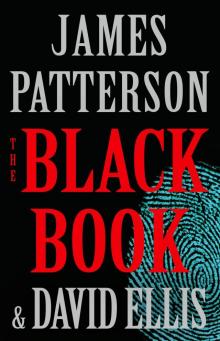 The Black Book
The Black Book London Bridges
London Bridges Toys
Toys The Last Days of John Lennon
The Last Days of John Lennon Roses Are Red
Roses Are Red Witch & Wizard
Witch & Wizard The Dolls
The Dolls The Christmas Wedding
The Christmas Wedding The River Murders
The River Murders The 18th Abduction
The 18th Abduction The 19th Christmas
The 19th Christmas Middle School: How I Got Lost in London
Middle School: How I Got Lost in London Just My Rotten Luck
Just My Rotten Luck Red Alert
Red Alert Walk in My Combat Boots
Walk in My Combat Boots Three Women Disappear
Three Women Disappear 21st Birthday
21st Birthday All-American Adventure
All-American Adventure Becoming Muhammad Ali
Becoming Muhammad Ali The Murder of an Angel
The Murder of an Angel The 13-Minute Murder
The 13-Minute Murder Rebels With a Cause
Rebels With a Cause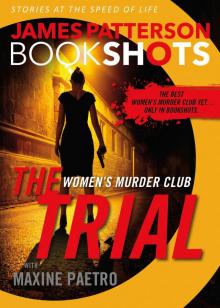 The Trial
The Trial Run for Your Life
Run for Your Life The House Next Door
The House Next Door NYPD Red 2
NYPD Red 2 Ali Cross
Ali Cross The Big Bad Wolf
The Big Bad Wolf Middle School: My Brother Is a Big, Fat Liar
Middle School: My Brother Is a Big, Fat Liar Private Paris
Private Paris Miracle on the 17th Green
Miracle on the 17th Green The People vs. Alex Cross
The People vs. Alex Cross The Beach House
The Beach House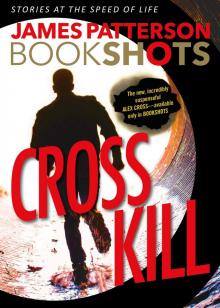 Cross Kill
Cross Kill Dog Diaries
Dog Diaries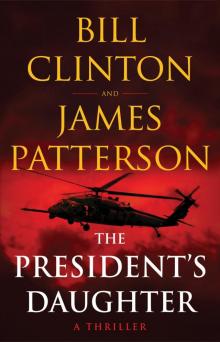 The President's Daughter
The President's Daughter Happy Howlidays
Happy Howlidays Detective Cross
Detective Cross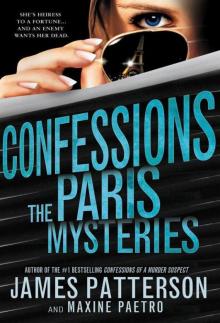 The Paris Mysteries
The Paris Mysteries Watch the Skies
Watch the Skies 113 Minutes
113 Minutes Alex Cross's Trial
Alex Cross's Trial NYPD Red 3
NYPD Red 3 Hush Hush
Hush Hush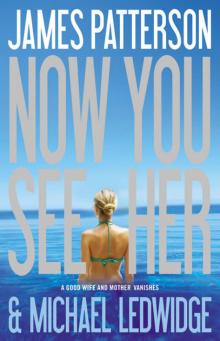 Now You See Her
Now You See Her Merry Christmas, Alex Cross
Merry Christmas, Alex Cross 2nd Chance
2nd Chance Private Royals
Private Royals Two From the Heart
Two From the Heart Max
Max I, Funny
I, Funny Blindside (Michael Bennett)
Blindside (Michael Bennett) Sophia, Princess Among Beasts
Sophia, Princess Among Beasts Armageddon
Armageddon Don't Blink
Don't Blink NYPD Red 6
NYPD Red 6 The First Lady
The First Lady Texas Outlaw
Texas Outlaw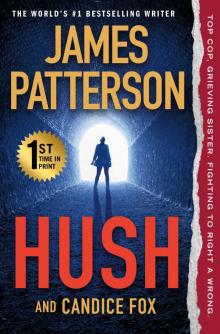 Hush
Hush Beach Road
Beach Road Private Berlin
Private Berlin The Family Lawyer
The Family Lawyer Jack & Jill
Jack & Jill The Midwife Murders
The Midwife Murders Middle School: Rafe's Aussie Adventure
Middle School: Rafe's Aussie Adventure The Murder of King Tut: The Plot to Kill the Child King
The Murder of King Tut: The Plot to Kill the Child King First Love
First Love The Dangerous Days of Daniel X
The Dangerous Days of Daniel X Hawk
Hawk Private Delhi
Private Delhi The 20th Victim
The 20th Victim The Shadow
The Shadow Katt vs. Dogg
Katt vs. Dogg The Palm Beach Murders
The Palm Beach Murders 2 Sisters Detective Agency
2 Sisters Detective Agency Humans, Bow Down
Humans, Bow Down You've Been Warned
You've Been Warned Cradle and All
Cradle and All 20th Victim: (Women’s Murder Club 20) (Women's Murder Club)
20th Victim: (Women’s Murder Club 20) (Women's Murder Club) Season of the Machete
Season of the Machete Woman of God
Woman of God Mary, Mary
Mary, Mary Blindside
Blindside Invisible
Invisible The Chef
The Chef Revenge
Revenge See How They Run
See How They Run Pop Goes the Weasel
Pop Goes the Weasel 15th Affair
15th Affair Middle School: Get Me Out of Here!
Middle School: Get Me Out of Here! Middle School: How I Survived Bullies, Broccoli, and Snake Hill
Middle School: How I Survived Bullies, Broccoli, and Snake Hill From Hero to Zero - Chris Tebbetts
From Hero to Zero - Chris Tebbetts G'day, America
G'day, America Max Einstein Saves the Future
Max Einstein Saves the Future The Cornwalls Are Gone
The Cornwalls Are Gone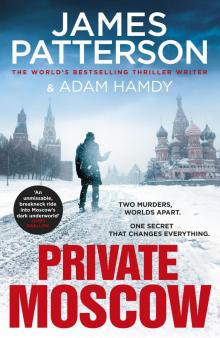 Private Moscow
Private Moscow Two Schools Out - Forever
Two Schools Out - Forever Hollywood 101
Hollywood 101 Deadly Cargo: BookShots
Deadly Cargo: BookShots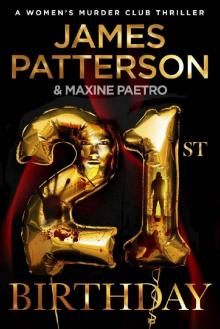 21st Birthday (Women's Murder Club)
21st Birthday (Women's Murder Club) The Sky Is Falling
The Sky Is Falling Cajun Justice
Cajun Justice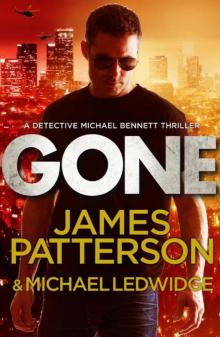 Bennett 06 - Gone
Bennett 06 - Gone The House of Kennedy
The House of Kennedy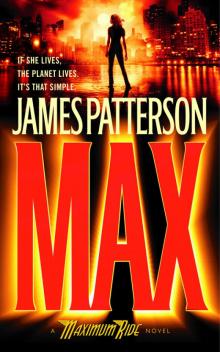 Waterwings
Waterwings Murder is Forever, Volume 2
Murder is Forever, Volume 2 Maximum Ride 02
Maximum Ride 02 Treasure Hunters--The Plunder Down Under
Treasure Hunters--The Plunder Down Under Private Royals: BookShots (A Private Thriller)
Private Royals: BookShots (A Private Thriller) After the End
After the End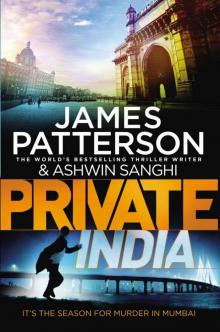 Private India: (Private 8)
Private India: (Private 8)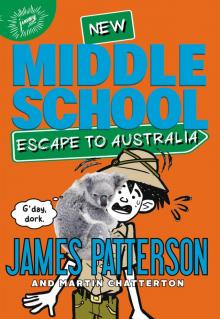 Escape to Australia
Escape to Australia WMC - First to Die
WMC - First to Die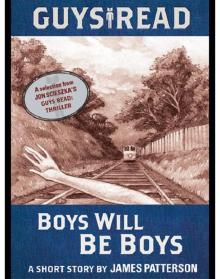 Boys Will Be Boys
Boys Will Be Boys The Red Book
The Red Book 11th hour wmc-11
11th hour wmc-11 Hidden
Hidden You've Been Warned--Again
You've Been Warned--Again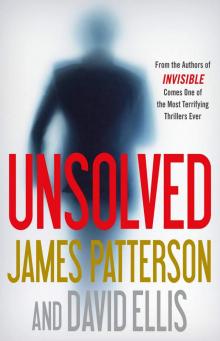 Unsolved
Unsolved Pottymouth and Stoopid
Pottymouth and Stoopid Hope to Die: (Alex Cross 22)
Hope to Die: (Alex Cross 22) The Moores Are Missing
The Moores Are Missing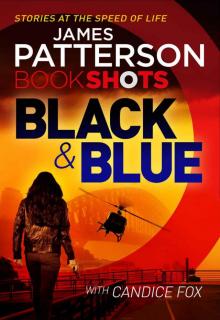 Black & Blue: BookShots (Detective Harriet Blue Series)
Black & Blue: BookShots (Detective Harriet Blue Series) Airport - Code Red: BookShots
Airport - Code Red: BookShots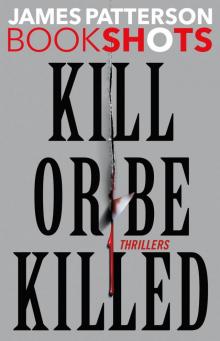 Kill or Be Killed
Kill or Be Killed School's Out--Forever
School's Out--Forever When the Wind Blows
When the Wind Blows Heist: BookShots
Heist: BookShots Murder of Innocence (Murder Is Forever)
Murder of Innocence (Murder Is Forever) Red Alert_An NYPD Red Mystery
Red Alert_An NYPD Red Mystery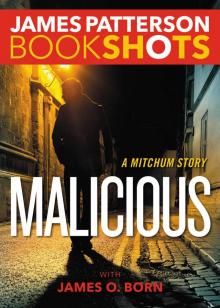 Malicious
Malicious Scott Free
Scott Free The Summer House
The Summer House French Kiss
French Kiss Treasure Hunters
Treasure Hunters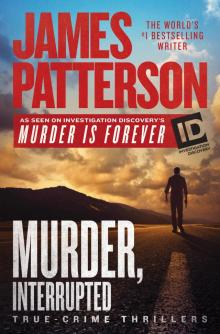 Murder Is Forever, Volume 1
Murder Is Forever, Volume 1 Secret of the Forbidden City
Secret of the Forbidden City Cross the Line: (Alex Cross 24)
Cross the Line: (Alex Cross 24) Witch & Wizard: The Fire
Witch & Wizard: The Fire![Women's Murder Club [06] The 6th Target Read online](http://i1.bookreadfree.com/i/03/24/womens_murder_club_06_the_6th_target_preview.jpg) Women's Murder Club [06] The 6th Target
Women's Murder Club [06] The 6th Target Cross My Heart ac-21
Cross My Heart ac-21 Alex Cross’s Trial ак-15
Alex Cross’s Trial ак-15 Alex Cross 03 - Jack & Jill
Alex Cross 03 - Jack & Jill Liar Liar: (Harriet Blue 3) (Detective Harriet Blue Series)
Liar Liar: (Harriet Blue 3) (Detective Harriet Blue Series) Cross Country ак-14
Cross Country ак-14 Honeymoon h-1
Honeymoon h-1 Maximum Ride: The Angel Experiment
Maximum Ride: The Angel Experiment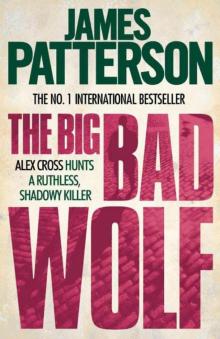 The Big Bad Wolf ак-9
The Big Bad Wolf ак-9 Dead Heat: BookShots (Book Shots)
Dead Heat: BookShots (Book Shots)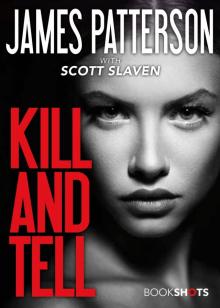 Kill and Tell
Kill and Tell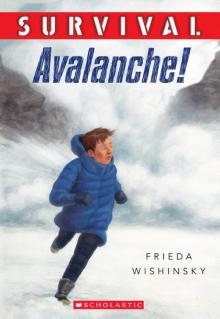 Avalanche
Avalanche Robot Revolution
Robot Revolution Public School Superhero
Public School Superhero 12th of Never
12th of Never Max: A Maximum Ride Novel
Max: A Maximum Ride Novel All-American Murder
All-American Murder Murder Games
Murder Games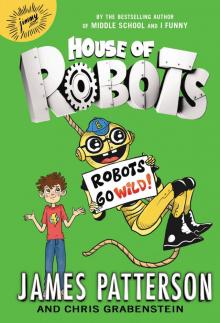 Robots Go Wild!
Robots Go Wild! My Life Is a Joke
My Life Is a Joke Private: Gold
Private: Gold Demons and Druids
Demons and Druids Jacky Ha-Ha
Jacky Ha-Ha Postcard killers
Postcard killers Princess: A Private Novel
Princess: A Private Novel Kill Alex Cross ac-18
Kill Alex Cross ac-18 12th of Never wmc-12
12th of Never wmc-12 The Murder of King Tut
The Murder of King Tut I Totally Funniest
I Totally Funniest Cross Fire ак-17
Cross Fire ак-17 Count to Ten
Count to Ten![Women's Murder Club [10] 10th Anniversary Read online](http://i1.bookreadfree.com/i1/03/30/womens_murder_club_10_10th_anniversary_preview.jpg) Women's Murder Club [10] 10th Anniversary
Women's Murder Club [10] 10th Anniversary![Women's Murder Club [01] 1st to Die Read online](http://i1.bookreadfree.com/i1/03/31/womens_murder_club_01_1st_to_die_preview.jpg) Women's Murder Club [01] 1st to Die
Women's Murder Club [01] 1st to Die I, Michael Bennett mb-5
I, Michael Bennett mb-5 Nooners
Nooners![Women's Murder Club [08] The 8th Confession Read online](http://i1.bookreadfree.com/i1/04/03/womens_murder_club_08_the_8th_confession_preview.jpg) Women's Murder Club [08] The 8th Confession
Women's Murder Club [08] The 8th Confession Private jm-1
Private jm-1 Treasure Hunters: Danger Down the Nile
Treasure Hunters: Danger Down the Nile Worst Case mb-3
Worst Case mb-3 Don’t Blink
Don’t Blink The Games
The Games The Medical Examiner: A Women's Murder Club Story
The Medical Examiner: A Women's Murder Club Story Black Market
Black Market Gone mb-6
Gone mb-6![Women's Murder Club [02] 2nd Chance Read online](http://i1.bookreadfree.com/i1/04/04/womens_murder_club_02_2nd_chance_preview.jpg) Women's Murder Club [02] 2nd Chance
Women's Murder Club [02] 2nd Chance French Twist
French Twist Kenny Wright
Kenny Wright Manhunt: A Michael Bennett Story
Manhunt: A Michael Bennett Story Cross Kill: An Alex Cross Story
Cross Kill: An Alex Cross Story Confessions of a Murder Suspect td-1
Confessions of a Murder Suspect td-1 Second Honeymoon h-2
Second Honeymoon h-2 Chase_A BookShot_A Michael Bennett Story
Chase_A BookShot_A Michael Bennett Story Confessions: The Paris Mysteries
Confessions: The Paris Mysteries![Women's Murder Club [09] The 9th Judgment Read online](http://i1.bookreadfree.com/i2/04/08/womens_murder_club_09_the_9th_judgment_preview.jpg) Women's Murder Club [09] The 9th Judgment
Women's Murder Club [09] The 9th Judgment Absolute Zero
Absolute Zero Nevermore: The Final Maximum Ride Adventure mr-8
Nevermore: The Final Maximum Ride Adventure mr-8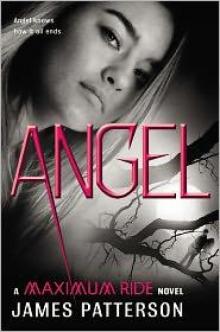 Angel: A Maximum Ride Novel mr-7
Angel: A Maximum Ride Novel mr-7 Juror #3
Juror #3 Million-Dollar Mess Down Under
Million-Dollar Mess Down Under The Verdict: BookShots (A Jon Roscoe Thriller)
The Verdict: BookShots (A Jon Roscoe Thriller)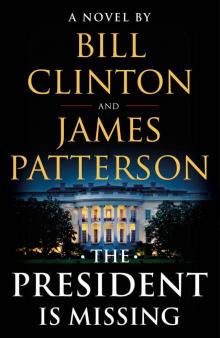 The President Is Missing: A Novel
The President Is Missing: A Novel![Women's Murder Club [04] 4th of July Read online](http://i1.bookreadfree.com/i2/04/06/womens_murder_club_04_4th_of_july_preview.jpg) Women's Murder Club [04] 4th of July
Women's Murder Club [04] 4th of July The Hostage: BookShots (Hotel Series)
The Hostage: BookShots (Hotel Series) $10,000,000 Marriage Proposal
$10,000,000 Marriage Proposal Diary of a Succubus
Diary of a Succubus Unbelievably Boring Bart
Unbelievably Boring Bart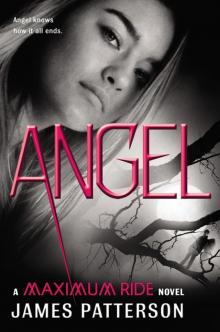 Angel: A Maximum Ride Novel
Angel: A Maximum Ride Novel Stingrays
Stingrays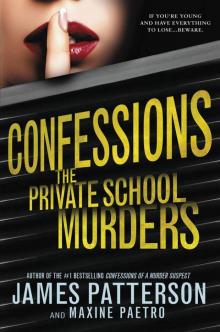 Confessions: The Private School Murders
Confessions: The Private School Murders Stealing Gulfstreams
Stealing Gulfstreams![Women's Murder Club [05] The 5th Horseman Read online](http://i1.bookreadfree.com/i2/04/05/womens_murder_club_05_the_5th_horseman_preview.jpg) Women's Murder Club [05] The 5th Horseman
Women's Murder Club [05] The 5th Horseman Zoo 2
Zoo 2 Jack Morgan 02 - Private London
Jack Morgan 02 - Private London Treasure Hunters--Quest for the City of Gold
Treasure Hunters--Quest for the City of Gold The Christmas Mystery
The Christmas Mystery Murder in Paradise
Murder in Paradise Kidnapped: BookShots (A Jon Roscoe Thriller)
Kidnapped: BookShots (A Jon Roscoe Thriller)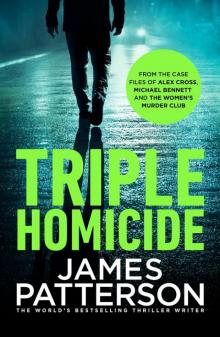 Triple Homicide_Thrillers
Triple Homicide_Thrillers 16th Seduction: (Women’s Murder Club 16) (Women's Murder Club)
16th Seduction: (Women’s Murder Club 16) (Women's Murder Club)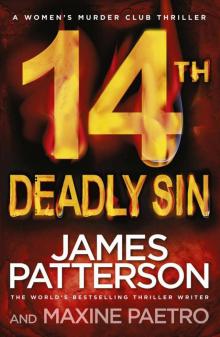 14th Deadly Sin: (Women’s Murder Club 14)
14th Deadly Sin: (Women’s Murder Club 14) Texas Ranger
Texas Ranger Witch & Wizard 04 - The Kiss
Witch & Wizard 04 - The Kiss![Women's Murder Club [03] 3rd Degree Read online](http://i1.bookreadfree.com/i2/04/12/womens_murder_club_03_3rd_degree_preview.jpg) Women's Murder Club [03] 3rd Degree
Women's Murder Club [03] 3rd Degree Break Point: BookShots
Break Point: BookShots Alex Cross 04 - Cat & Mouse
Alex Cross 04 - Cat & Mouse Maximum Ride
Maximum Ride Fifty Fifty: (Harriet Blue 2) (Detective Harriet Blue Series)
Fifty Fifty: (Harriet Blue 2) (Detective Harriet Blue Series) Alex Cross 02 - Kiss the Girls
Alex Cross 02 - Kiss the Girls The President Is Missing
The President Is Missing Hunted
Hunted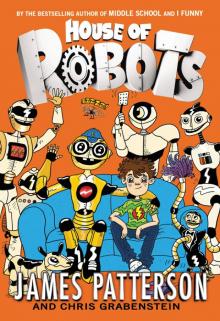 House of Robots
House of Robots Dangerous Days of Daniel X
Dangerous Days of Daniel X Tick Tock mb-4
Tick Tock mb-4 10th Anniversary wmc-10
10th Anniversary wmc-10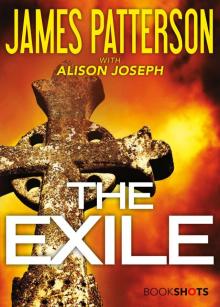 The Exile
The Exile Private Games-Jack Morgan 4 jm-4
Private Games-Jack Morgan 4 jm-4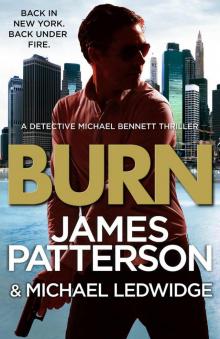 Burn: (Michael Bennett 7)
Burn: (Michael Bennett 7) Laugh Out Loud
Laugh Out Loud The People vs. Alex Cross: (Alex Cross 25)
The People vs. Alex Cross: (Alex Cross 25)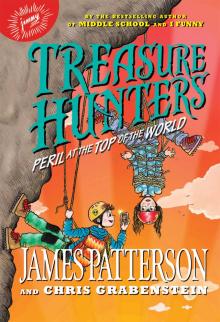 Peril at the Top of the World
Peril at the Top of the World I Funny TV
I Funny TV Merry Christmas, Alex Cross ac-19
Merry Christmas, Alex Cross ac-19 #1 Suspect jm-3
#1 Suspect jm-3 Fang: A Maximum Ride Novel
Fang: A Maximum Ride Novel![Women's Murder Club [07] 7th Heaven Read online](http://i1.bookreadfree.com/i2/04/13/womens_murder_club_07_7th_heaven_preview.jpg) Women's Murder Club [07] 7th Heaven
Women's Murder Club [07] 7th Heaven The End
The End